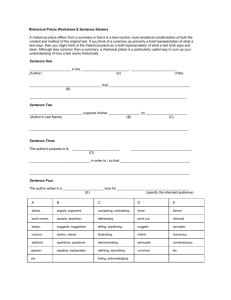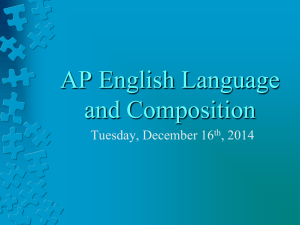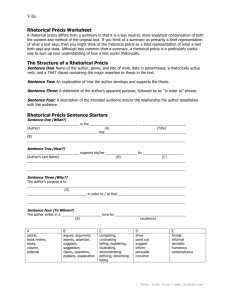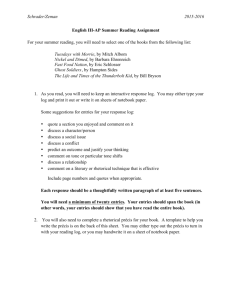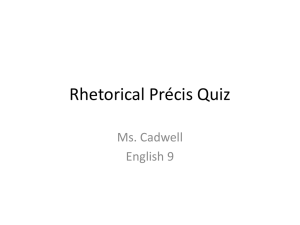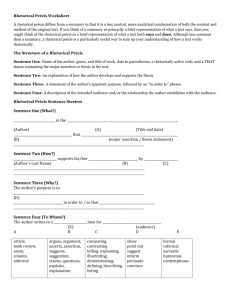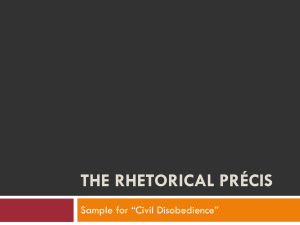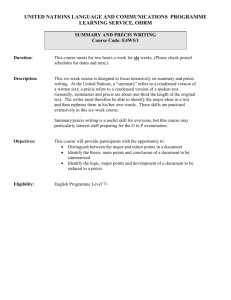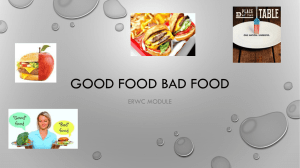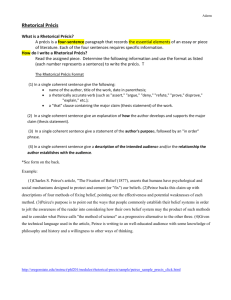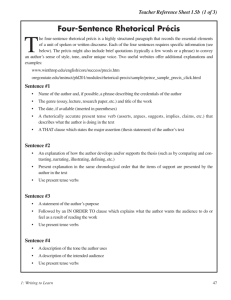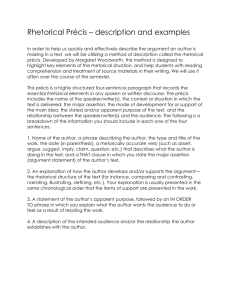Value of Life: Rhetorical Analysis & Ethical Considerations
advertisement
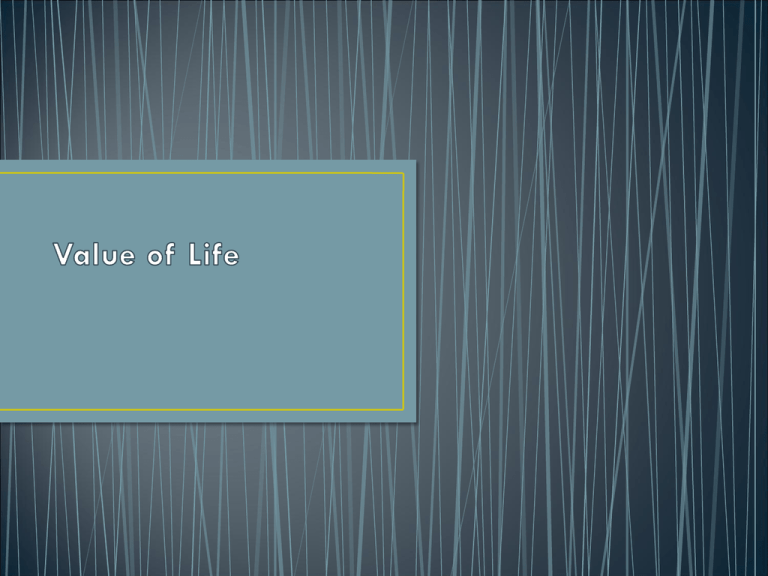
Quickwrite • Describe your process for reading a text rhetorically. What are the different stages of your reading process? What do you do during each stage? • The article “What Is a Life Worth?” comes from the February 12, 2002, issue of Time magazine. Take a look at its form and length. How much time do you think it will take to read this piece? • This article includes the following subtitle: “To compensate families of the victims of Sept. 11, the government has invented a way to measure blood and loss in cash. A look at the wrenching calculus.” What predictions can you make about the article’s content from this subtitle? • What types of people do you think compose Time magazine’s primary readership? • What connections do you think you might see between this article and the previous two texts you have read? Below, you will find three groupings of vocabulary words taken from “What Is a Life Worth?” The first group consists of words related to the legal and financial aspects of the article. The second list contains terms that convey information with particular emotional connotations. The final set of words is made up of terms that are used to describe the workings of the governmental plan to compensate 9/11 family victims. Working with your table group, look over each list of words and provide a brief definition in your own words for the words you do not know well. • compensate (make up for a loss) • litigation (legal action; suing) • commodify (turn something into an object of monetary value) • valuation (determination of a monetary value) • discretion (judgment) • liability (debt or disadvantage) • beneficiary (recipient of a benefit, usually monetary) • tort (a civil lawsuit to remedy a wrongful act) • allocation (distribution, especially of money) • disparity (unfairness, unevenness) • squeamish (easily offended) • garish (offensively bright and showy) • gall (impudence; insolence) • traumatize (to inflict stress or pain upon someone) • callous (uncaring, cold) • inconsolable (incapable of being comforted) • indignant (full of anger over an injustice) • balk (resist; refuse to proceed) • deteriorate (degenerate; gradually fall apart) • rhetorical (related to the effective use of language) • Rorschach test (an inkblot test that reveals a person’s particular viewpoint) • artillery (heavy ammunition used against an enemy) • analogy (a comparison intended to illustrate common elements between seemingly different items) • solidarity (unity based on a common interest) • orchestrated (carefully arranged to achieve a particular effect) • concoct (to put together from various materials) • mechanism (technique for achieving a specific result) Reading for Understanding As you read “What Is a Life Worth?” for the first time, look for the main issues and the various stances people take in response to those issues. Be sure to also look for connections to the idea of valuing life and to what was previously said about valuing life by Shakespeare and Ebert. How is “life” defined in this text? For example, does “life” refer to a human body, a soul, human experience, existence, or quality of life? Does this definition include a person’s personal life and professional or working life? Choose two highlighters and revisit the text of the article on 9/11. The two colors will be used to mark two different aspects of the article. With the first color, highlight the words, phrases, and sentences from the article that describe valuing life in legal and financial terms. With the second color, highlight the words, phrases, and sentences that describe valuing life in human and emotional terms. Writing a Rhetorical Précis A rhetorical précis is both a summary of an article and it shows understanding of its arguments. In a précis you demonstrate comprehension of the complexities and nuances in sophisticated writing. The rhetorical précis includes five parts. • • • • Part 1: Introduce the author, the title, and the main argument. Part 2: Explain how the author develops or advances the argument. Part 3: State the author’s purpose of the text. Part 4: Describe the intended audience and the author’s relationship to the audience. • Part 5: Explain the significance of this work. Use the worksheet template to write a complete rhetorical précis for the Ripley article. 1. Most news articles such as “What Is a Life Worth?” try to take an objective, unbiased approach. Would you agree that this text is unbiased, or do you think it favors one perspective? Explain your answer. 2. What kinds of evidence does Ripley, the author of the article, use to get across the key ideas and issues associated with the compensation of 9/11 victims and their families? Are any specific types of evidence more compelling to you as a reader? Less compelling? 3. How accurate do you think the information in the article is? In other words, do you think Time magazine and Ripley are to be trusted? Why or why not? 4. Does the article use logic, emotion, or both to make an impact on the reader? If so, describe how. Compare that use to the way logic and emotion are used by Shakespeare, Ebert, or both. Make a third entry on your chart for “What Is a Life Worth?” Feel free to use the highlighting, summarizing, connections, and critical thinking work you did previously as a way to fill out the chart.
